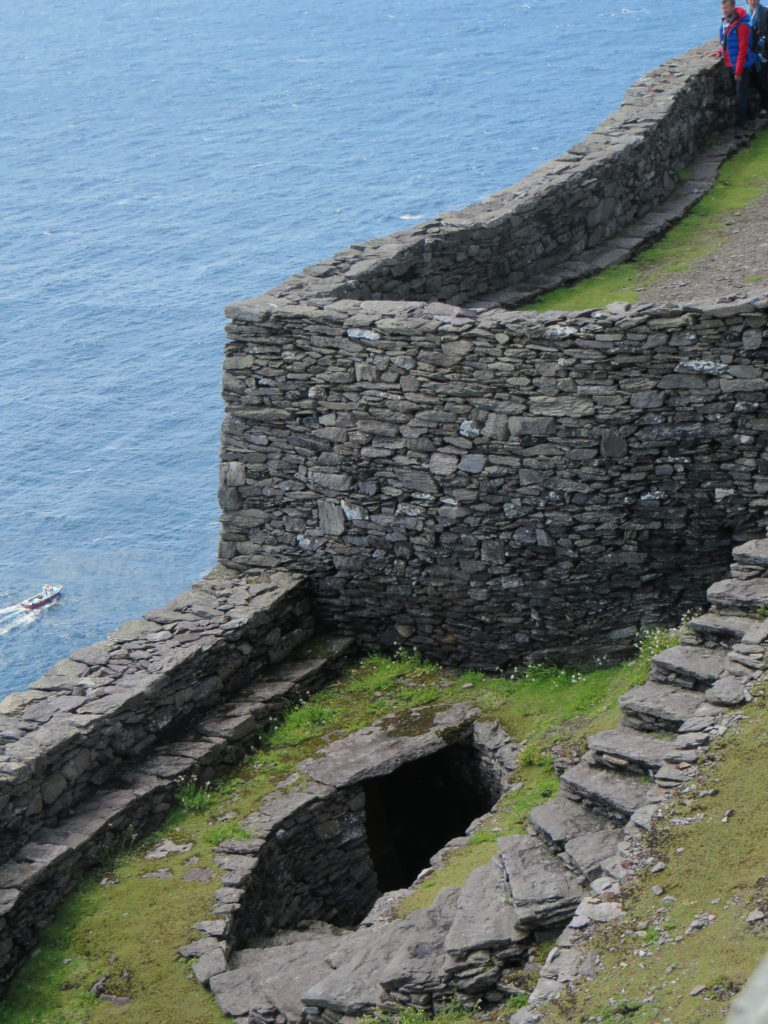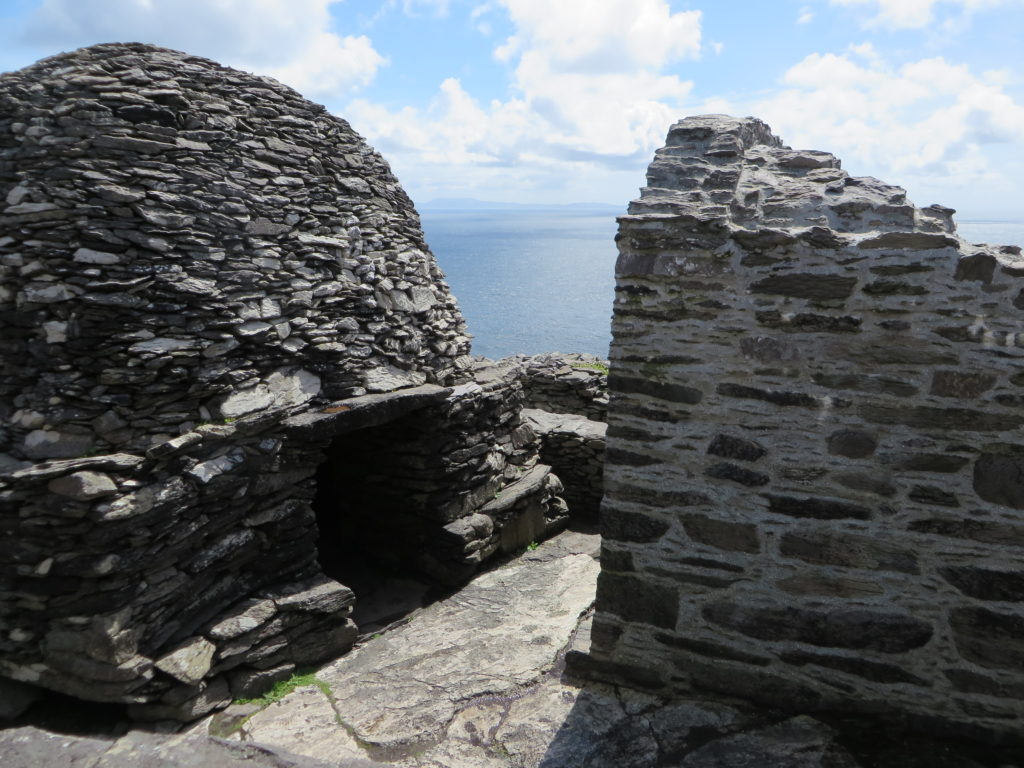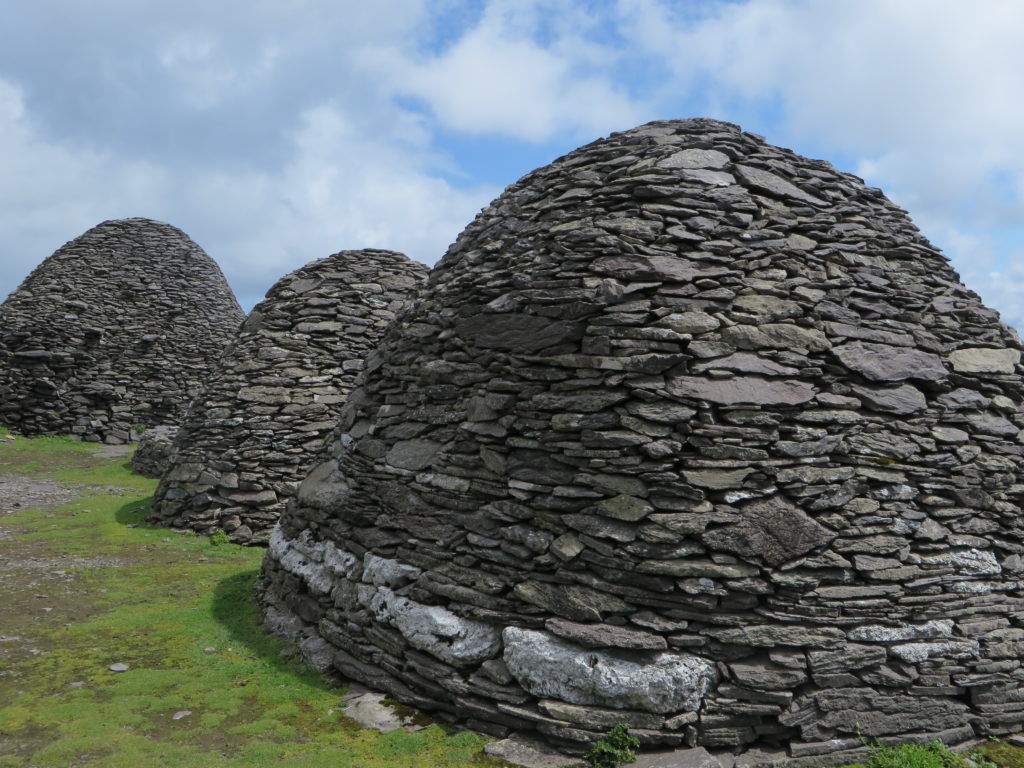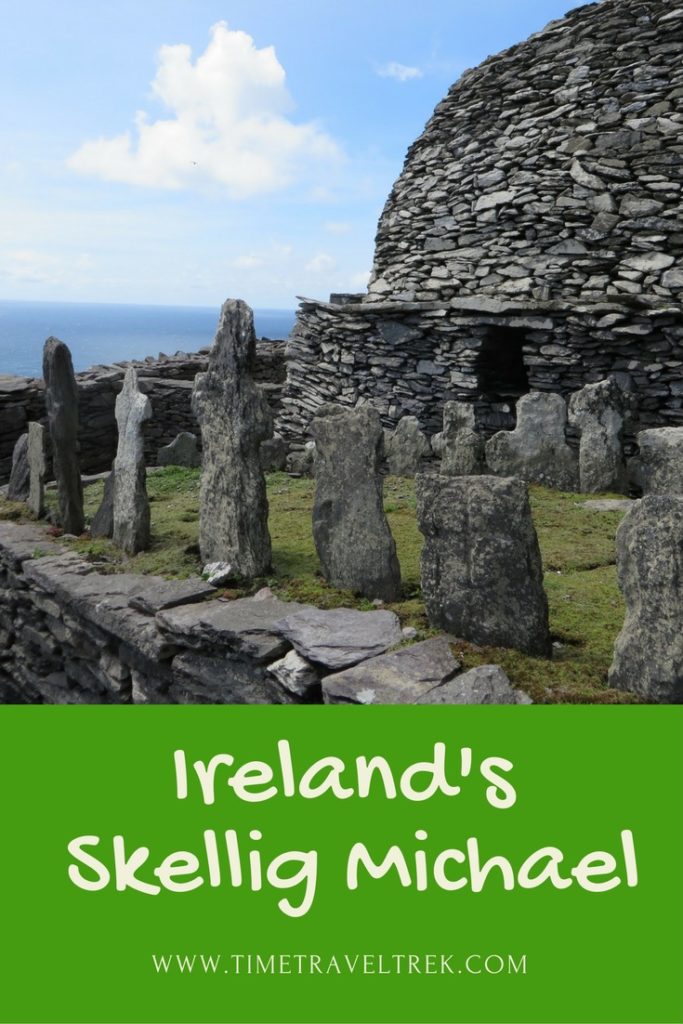Table of Contents
Somewhere between the 6th and 8th centuries, a group of monks sought an isolated locale to practice their religion.
They found Skellig Michael.
Disclosure: This post contains Affiliate Links.
Skellig come from Sceillic, which means steep rock. Over the next 500 years these Christian monks would develop a precipitous monastic complex that boggles the mind. Perched on a rugged sea crag in the wild Atlantic Ocean, 12 kilometres (8 miles) off of Ireland’s Ivereagh Peninsula in County Kerry, this well-preserved, early medieval ecclesiastical site is quite unlike any other in the world.
The Monastery at Skellig Michael
The monks chose a sloping rock plateau around 200 metres (650 feet) above the sea to build the monastery. Using a series of dry-stacked retaining walls, they built terraces to level the ground. The retaining walls not only levelled the cliffs, they provided shelter from the prevailing winds. This created a somewhat milder microclimate and allowed the monks to grow some of their food on garden terraces. As there is no fresh water on Skellig Michael, the monks built water cisterns to collect water.

The focus of the inner enclosure was the boat-shaped Large Oratory. This place of prayer was the most important building. It holds a dominant spot in the small compound. A Small Oratory is located on a separate terrace.

At the back to the Large Oratory is the Monks’ Graveyard. The series of weathered crosses set into the west side of the graveyard are in their original locations. Over a hundred stone crosses of varying sizes have been recorded on the island.
All of the dry-stacked buildings on Skellig Michael were corbelled. Corbelling is a technique where individual stones are laid flat, with each successive stone placed so that it overhangs on the inner face. This creates a beehive-shaped stone hut.

There are six dwellings in the monastery. Each includes raised sections for sleeping areas and small cupboards built into the walls. Austere is a kind description of these dark and cold shelters.
In the 13th century the monks moved off Skellig Michael, leaving behind a unique legacy that became a UNESCO World Heritage Site in 1996.
If You Go:
From the boat dock, today’s visitors head up the early 19th century lighthouse road before ascending the south steps up to Christ’s Saddle and on to the monastery. It’s important to note that a visit to the monastery not only demands a sometimes hair-raising boat ride, it also involves a climb up 618 steps rising over 180 metres (600 feet) above sea level – with some risk of exposure.
Boat trips to Skellig Michael run from May 12th to October 2nd in 2017 (weather permitting). Although access to the monastery itself is free, the 11 ½ kilometre (7 mile) boat trip from Portmagee will cost in the neighbourhood of 70-75 Euros per person. Trips depart from the Portmagee marina around 9:15 am, returning after 2 pm. Most landing tours fill months ahead of time, book in advance.
Read more about our Irish adventures at:
- Drawn to the Burren
- Ireland’s Hill of Tara
- Ireland’s Trim Castle
- Getting to Know Guinness: Going to the Source in Dublin, Ireland
- The Stone Circles of Cork & Kerry, Ireland
- Ireland’s Brú na Bóinne

Leave a Reply